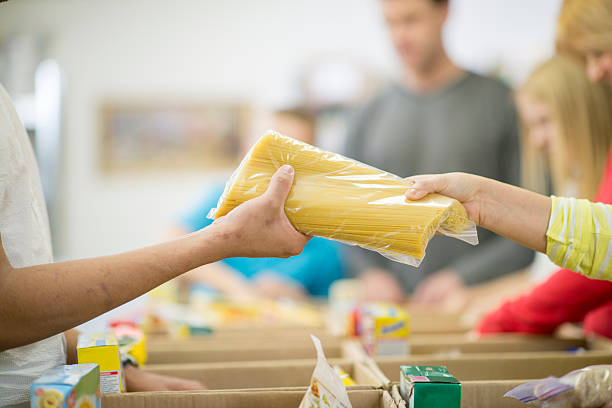Understanding Goodwill Donation Receipts: A Comprehensive Guide
The Importance of Goodwill Donation Receipts
Donating to charitable organizations is a fulfilling way to contribute to the community and support causes that resonate with you. Goodwill Industries, a well-known nonprofit organization, offers a variety of services and programs that benefit individuals and families in need. When you make a donation to Goodwill, whether it’s clothing, household items, or even financial contributions, obtaining a Goodwill donation receipt is a crucial part of the process. This receipt not only serves as proof of your donation but also provides you with the necessary documentation to claim tax deductions. Understanding the significance of these receipts and how to manage them effectively can enhance the overall donation experience.
What is a Goodwill Donation Receipt?
A Goodwill donation receipt is an official document issued by Goodwill Industries to acknowledge the receipt of donated items or monetary contributions. This receipt is an important tool for both the donor and the organization. For donors, it provides the necessary evidence to substantiate charitable contributions on their tax returns. For Goodwill, it ensures that donations are accurately recorded and helps maintain transparency and accountability.
The Purpose of a Goodwill Donation Receipt
The primary purpose of a Goodwill donation receipt is to document the transaction between the donor and the organization. This documentation is essential for several reasons:
- Tax Deductions: In many countries, charitable donations are tax-deductible. The receipt serves as proof of the donation, allowing donors to claim deductions on their income tax returns. The receipt typically includes details such as the date of the donation, a description of the items donated, and their estimated value.
- Record Keeping: Both donors and organizations benefit from maintaining accurate records. For donors, the receipt helps in tracking the total value of contributions made throughout the year, which is useful for financial planning and tax reporting. For Goodwill, it aids in managing inventory and evaluating the impact of their donation programs.
- Acknowledgment of Contribution: The receipt acknowledges the donor’s generosity and provides a formal record of the transaction. This acknowledgment is an important aspect of donor recognition and helps build a positive relationship between Goodwill and its supporters.
How to Obtain a Goodwill Donation Receipt
Obtaining a Goodwill donation receipt is a straightforward process. When you make a donation to Goodwill, whether at a donation center or through a donation drive, the staff will typically provide you with a receipt. The receipt is often given at the time of donation, but if it is not, you can request one.
- Donation Centers: When dropping off items at a Goodwill donation center, you can ask for a receipt from the attendant. The receipt will include details about the donated items and their estimated value. It is helpful to get this receipt immediately to ensure that you have a record of your donation.
- Donation Drives and Events: If you participate in a donation drive or special event organized by Goodwill, receipts are usually distributed at the event. If not, you can follow up with Goodwill to request a receipt.
- Online Donations: For monetary donations made online, Goodwill often sends an electronic receipt via email. This receipt will include all relevant details about the donation and can be printed for your records.
Valuing Donated Items
One of the key elements of a Goodwill donation receipt is the valuation of donated items. Goodwill provides a general guideline for estimating the value of common items, but ultimately, the donor is responsible for determining the fair market value of their contributions.
- Guidelines for Valuation: Goodwill may offer a list of typical values for various items, such as clothing, electronics, and household goods. This list can serve as a reference, but it is not a definitive valuation. Donors are encouraged to use their judgment or consult resources like online valuation guides to estimate the value of their donations.
- Condition of Items: The value of donated items is often influenced by their condition. Items that are in excellent or like-new condition generally have a higher value compared to those that are worn or damaged. It is important to provide an accurate assessment of the condition when valuing items for the receipt.
- Documentation: For high-value items or collections, donors may wish to obtain a professional appraisal to ensure accurate valuation. While Goodwill does not provide appraisals, having detailed documentation can be beneficial for tax purposes and for keeping thorough records.
Record Keeping and Tax Reporting
Proper record keeping is essential for maximizing the benefits of charitable donations. Goodwill donation receipts play a critical role in this process, especially when it comes to tax reporting.
- Organizing Receipts: It is advisable to keep all donation receipts organized and accessible. Using a dedicated folder or digital storage system can help in maintaining accurate records. For tax purposes, ensure that receipts are kept for at least three years, as this is generally the period during which tax authorities can audit your returns.
- Reporting Donations: When preparing your tax return, you will need to report charitable donations to claim deductions. The donation receipts will serve as supporting documentation to validate your claims. Ensure that the details on the receipts match the information reported on your tax return.
- Consulting a Tax Professional: For complex donation situations or large contributions, it may be beneficial to consult a tax professional. They can provide guidance on how to properly report donations and maximize tax benefits.
Benefits of Donating to Goodwill
Donating to Goodwill is not only a generous act but also offers several benefits beyond tax deductions. Goodwill Industries utilizes donations to fund various programs and services that support individuals facing challenges in their lives.
- Community Impact: Your donations help support Goodwill’s mission of providing job training, employment services, and other essential programs. These services are designed to assist individuals in achieving self-sufficiency and improving their quality of life.
- Environmental Benefits: Donating items to Goodwill also has positive environmental impacts. By donating gently used items, you contribute to reducing waste and promoting sustainability. Goodwill’s recycling and repurposing efforts help minimize the environmental footprint associated with discarded goods.
- Personal Fulfillment: Many donors find personal satisfaction in knowing that their contributions are making a difference. Supporting charitable organizations like Goodwill can provide a sense of accomplishment and connection to the broader community.
Conclusion
Goodwill donation receipts are an integral part of the donation process, offering valuable documentation for tax purposes and record-keeping. Understanding how to obtain and manage these receipts ensures that your contributions are accurately recorded and can be maximized for tax benefits. Additionally, recognizing the broader impact of your donations helps reinforce the value of giving and supports the continued success of organizations like Goodwill. By staying informed and organized, you can make the most of your charitable contributions and contribute meaningfully to causes that matter to you.




